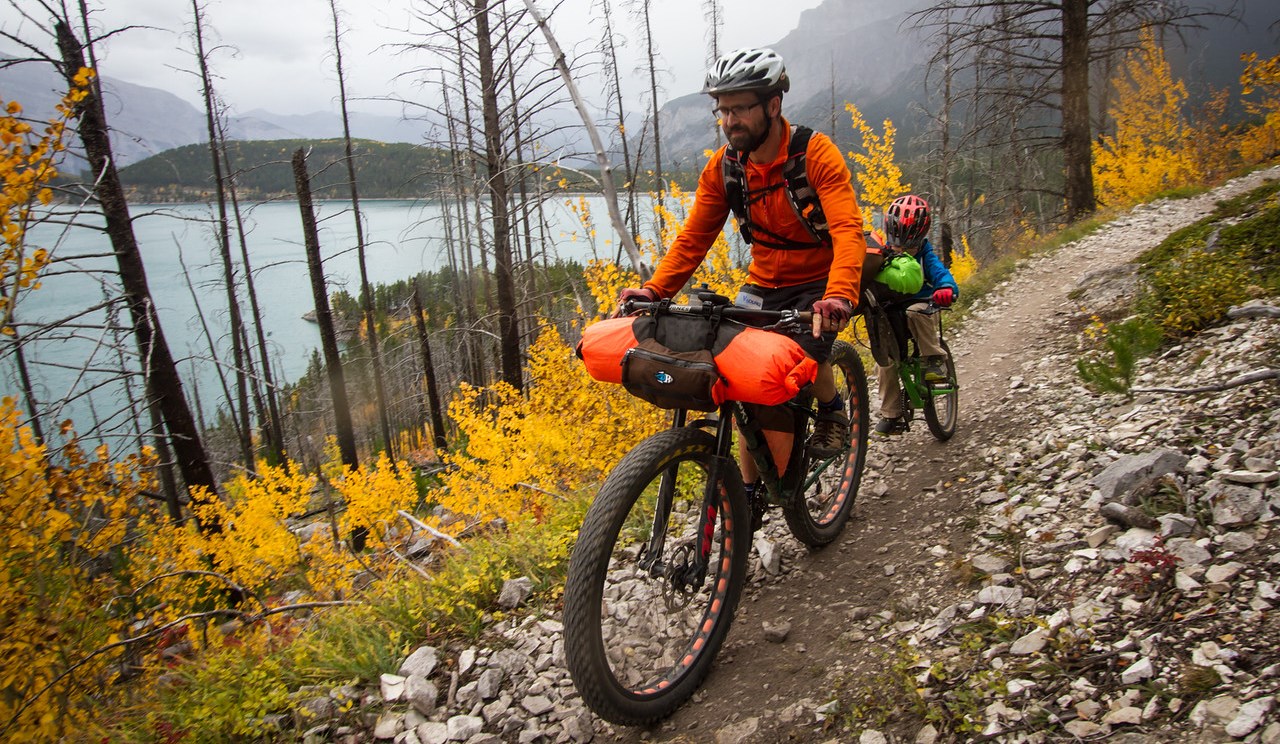From family-friendly bikepacking trails at Aspen Ridge, Salt Flats of Bolivia, the Auvergne Volcanoes natural park in central France to simple jaunts near home, the important thing is to start with small trips and make having fun the objective.
Naturally, there are some adjustments that need to be made in order to bikepack with children in tow, many of which depend on your child’s age and their desire to ride on their own.
Trailers
For younger children, a trailer is generally the best option. It allows them the chance to get a free ride while still getting outside to enjoy camping. When packed with snacks and a few favourite toys, most kids are happy to ride in a trailer and may even fall asleep.
Also, as going anywhere with family generally requires a lot of stuff that you won’t be able to take on a bike, taking a trailer provides an ample storage space.
However, taking a trailer does limit route options to wider paths, multi-purpose trails, and sidewalks.
Tag-a-long
For older children, a tag-a-long or trail-a-bike opens up an entirely new set of camping options for bikepacking with kids because you can travel on all but the most technical trails.
With a tag-a-long, the child has the option to pedal or coast, however, other than the space in front of the child’s handlebar, there are not a lot of storage options on the tag-a-long itself. It’s therefore a good idea for both the parent and the child to wear backpacks that can carry water, food, and spare clothes.
The biggest drawback of a tag-a-long, however, is stability. Since everything is connected, when your child leans or turns around to look at something, the entire bike wants to lean over.
Of course, as children get older they can switch to having their own pedal bikes, although it may limit the length of your adventure for a little while.
What bike to ride
The first port of call is to consider your own bike. You need one capable of handling the terrain you choose, although virtually any bike that can mount racks and/or storage bags can be used.
Remember, cycling without pavements is easier with wider tires so you may want to consider more of a mountain bike than a road bike.
How to pack your gear
Inevitably, there are things you will need to take so consider your storage options such as daypacks, panniers, frame bags, and trailers.
You don’t want to carry a lot of weight on your back. Instead, most of the weight should be placed as low as possible on your bike. This improves bike handling and your riding comfort.
What gear to bring
You’ll need basic bike items as well as backpacking gear.
This should include the usual backpacking items
A sleeping bag
Tent
Stove
As well as cycling items such as
Helmet
Tube/tire-repair kit
Spare tubes
A multi-tool that includes a chain tool
For extended trips, add
Chain lube
Chain pins/power links
Spare cables
A light lock for in-town resupply stops
Family bike packing tips
1. Limit your speed, especially on downhills.
2. Allow longer stopping distances.
3. Allow more room for cornering.
4. Ride with an easier gear than usual to reduce fatigue.
5. Try to stay off the main roads that make family cycling unenjoyable and potentially dangerous.
6. Start small, with laps around the block or forays into nearby parks, building up distance, duration and challenge slowly. There are families that go on distant multi-day trips with great success.










